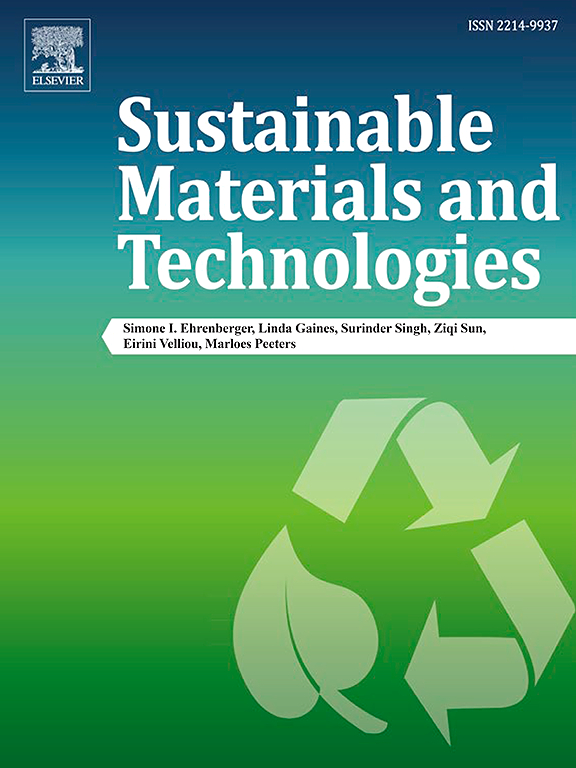Sustainable recovery of metallic Fe and oxides from bauxite residue via H2 reduction: Enhancing purity and recovery rates
IF 8.6
2区 工程技术
Q1 ENERGY & FUELS
引用次数: 0
Abstract
Bauxite Residue (BR), an alkaline waste from the Bayers process, holds significant metal oxides. This study explored a method to recover metals from BR simultaneously, involving H2 reduction with NaOH, followed by combined water leaching and a two-stage wet magnetic separation process. The investigation delved into the effects of factors (temperature, H2 quantity, time, and NaOH addition) on phase transformations, the recovery of Al and Na in the sodium aluminate as well as metallic Fe, and the separation of non-magnetic fractions (containing CaO, SiO2, TiO2). At 900 °C, complete conversion of iron oxides to metallic Fe was achieved. Sodium aluminate formation from aluminum oxyhydroxides increased with higher temperatures, time, and NaOH addition. Through the response surface methodology (RSM) approach, the study identified optimal H2 reduction conditions for concurrent metal recovery: 900 °C for 120 min with 20 wt% NaOH where Fe, Fe grade, Al, and Na recovery was 88.1 %, 69.1 %, 93.8 %, and 92.6 % respectively. This closed-loop process facilitates efficient and sustainable recovery of metallic Fe, Al, and Na (in sodium aluminate solution), and non-magnetic fractions abundant in Ca, Si, Ti, and REEs, thereby supporting the principles of a zero-waste economy.

氢还原法从铝土矿渣中可持续回收金属铁和氧化物:提高纯度和回收率
铝土矿渣(BR)是拜耳工艺产生的碱性废物,含有大量的金属氧化物。本研究探索了一种同时从BR中回收金属的方法,包括氢氧化钠还原H2,然后联合水浸和两段湿式磁分离工艺。研究了温度、H2量、时间、NaOH添加量等因素对铝酸钠的相变、铝酸钠中Al、Na和金属铁的回收率以及含CaO、SiO2、TiO2的非磁性组分分离的影响。在900℃时,铁氧化物完全转化为金属铁。氢氧化铝生成铝酸钠的温度越高,时间越长,氢氧化钠添加量越高。通过响应面法(RSM)确定了同时回收金属的最佳H2还原条件:900°C、120 min、20 wt% NaOH, Fe、Fe品位、Al和Na的回收率分别为88.1%、69.1%、93.8%和92.6%。这种闭环过程有助于有效和可持续地回收金属铁、铝和钠(在铝酸钠溶液中),以及富含Ca、Si、Ti和ree的非磁性组分,从而支持零浪费经济原则。
本文章由计算机程序翻译,如有差异,请以英文原文为准。
求助全文
约1分钟内获得全文
求助全文
来源期刊

Sustainable Materials and Technologies
Energy-Renewable Energy, Sustainability and the Environment
CiteScore
13.40
自引率
4.20%
发文量
158
审稿时长
45 days
期刊介绍:
Sustainable Materials and Technologies (SM&T), an international, cross-disciplinary, fully open access journal published by Elsevier, focuses on original full-length research articles and reviews. It covers applied or fundamental science of nano-, micro-, meso-, and macro-scale aspects of materials and technologies for sustainable development. SM&T gives special attention to contributions that bridge the knowledge gap between materials and system designs.
 求助内容:
求助内容: 应助结果提醒方式:
应助结果提醒方式:


